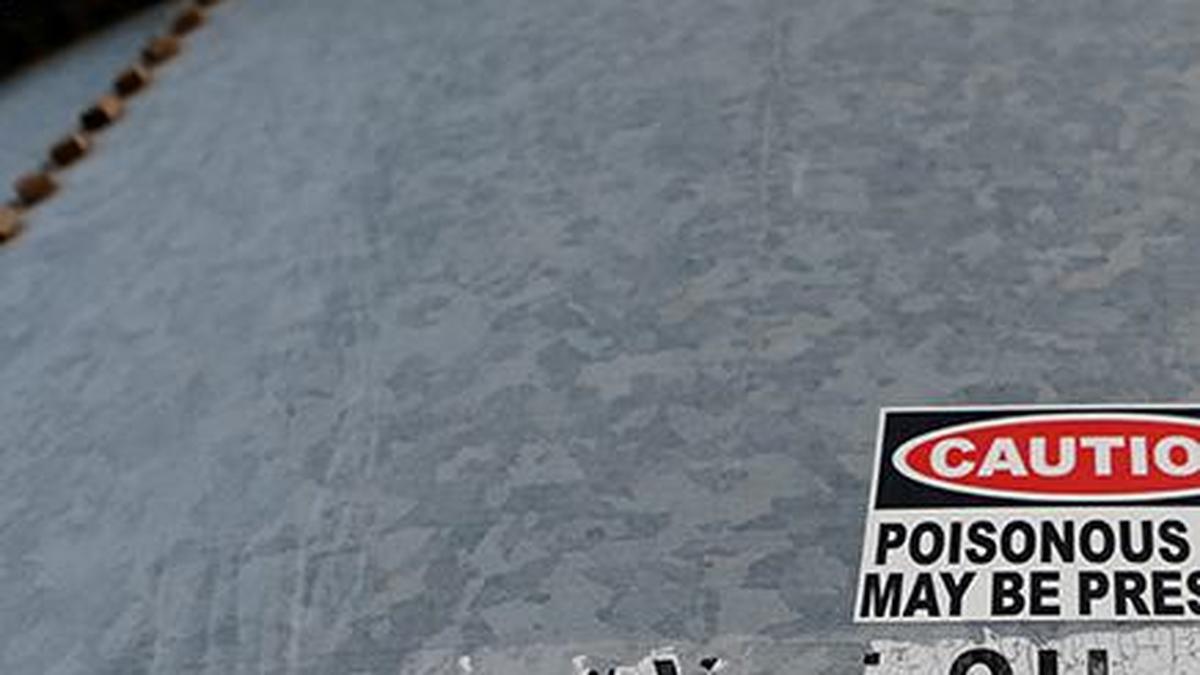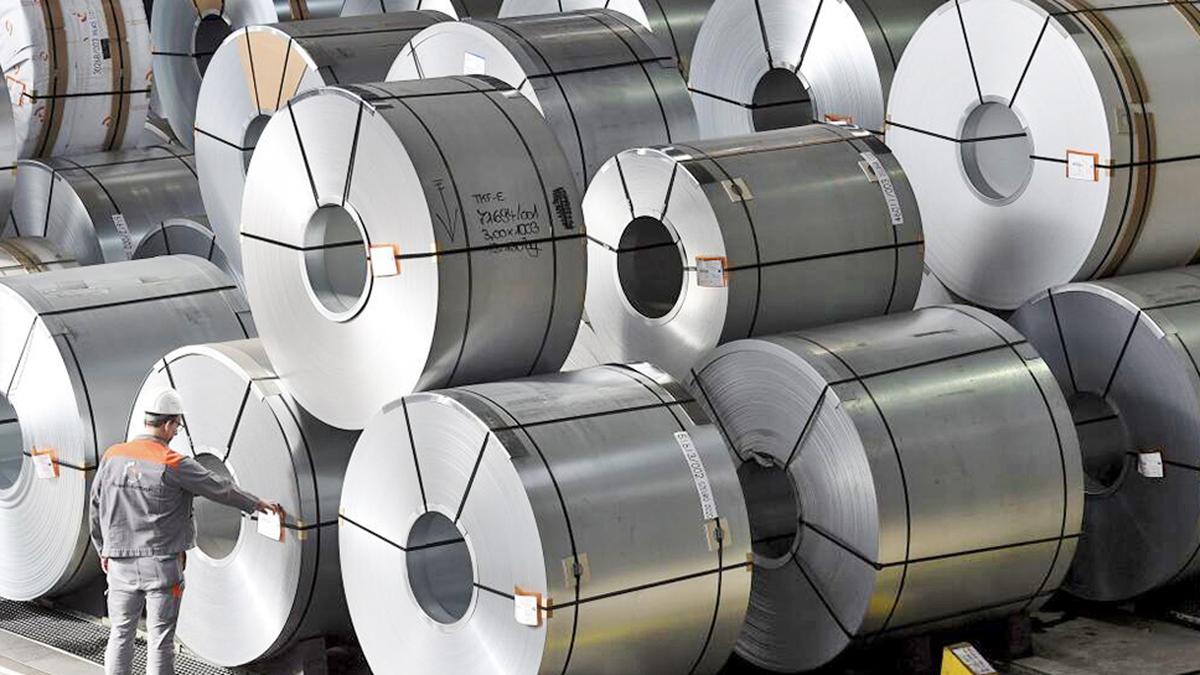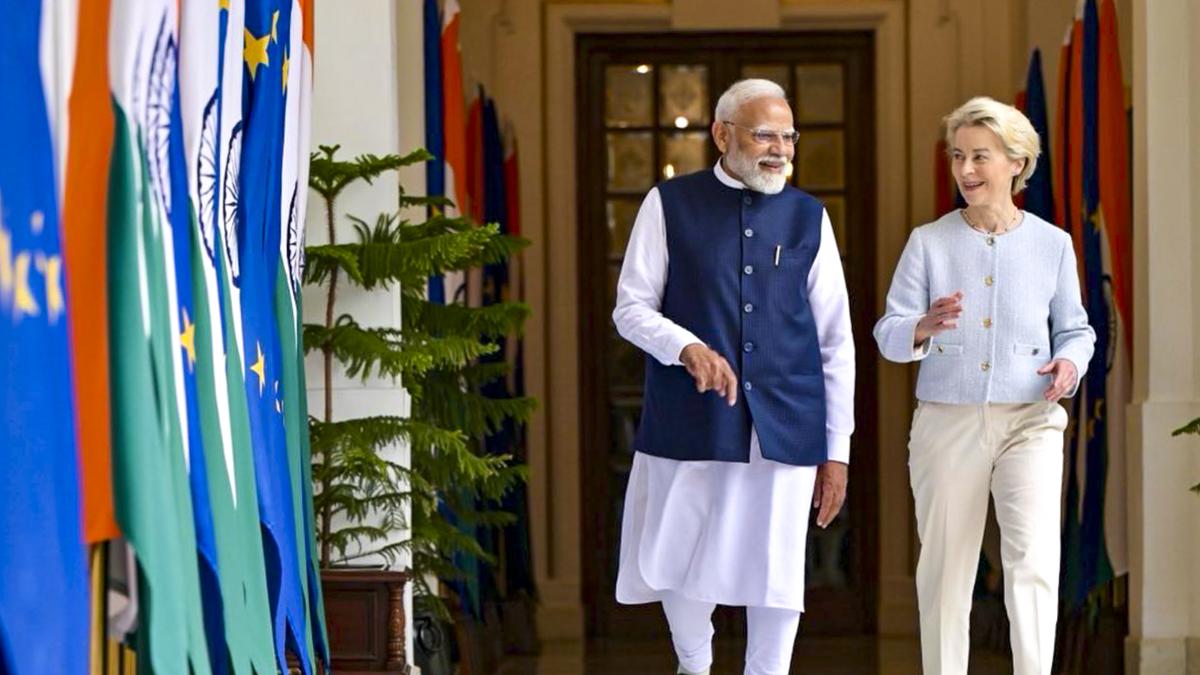Image for representational purposes only.
| Photo Credit: Reuters
India’s state-owned refiners trimmed down purchases of Russian oil by more than 45% between June and September this year, according to data from real-time maritime and analytics provider Kpler. Speaking to The Hindu, Naveen Das, Senior Crude Oil Analyst at Kpler said state-owned refiners took 600 thousand barrels/day (kb/d) of oil from Russia in September, a “fairly substantial” cut from 1.1 million barrels/day they took in June this year.
The trimming down of Russian oil imports fall against a larger geopolitical setting centred around U.S. President Donald Trump imposing 50% tariff on imports from India this August. This included a 25% penalty for buying Russian oil. Washington has been adamant that New Delhi halt their crude purchases from Moscow as a precondition to negotiate a favourable trade deal.
However, India has been steadfast about its commitment to maintaining domestic energy security. New Delhi has been procuring Russian oil at a discount after the latter found itself mired in sanctions following their actions in Ukraine.
However, while Indian state-run refiners have cut purchases from Moscow, India’s privately-owned refiners, Reliance Industries and Russia’s Rosneft-backed Nayara Energy, have increased their uptake. According to Kpler data, Reliance Industries now imports 850 kb/d of Russian oil which is more than double of the 420 kb/d it was importing in January. Further, Nayara imported nearly 400 kb/d in October – its highest this year.
Also Read | Indian refiners pause Russian oil purchases, sources say
Russian exports high, not proportionally transferring to India
According to Mr. Das, although Russia exported more crude oil in both August and September, it did not translate into proportionate arrivals to India. India’s total imports from Russia have remained stable since July hovering at about 1.63 mb/d. This is after Russian imports touched an over two-year high of more than 2 mb/d in June. Kpler predicts “another small dip” may come in October, thus, with estimated imports coming in at 1.56 mb/d.
Also Read | Russia is not Iran, India can’t cancel oil imports on U.S. demand: experts
Narrowing discount
The Kpler analyst observed the discount on Russian crude, notably the medium-sour Urals grade which make up the majority of India’s Russian crude imports, is “narrowing” at present. When the secondary round of tariffs was imposed in August, the landing price of a barrel on the West Coast of India entailed an approx. $6 discount to the Dubai benchmark. At present, the discount is “nearer to $0.80/barrel”, Mr. Das observed, explaining, “[This is with] the market realising that India is buying Russian crude more aggressively than previously anticipated, while higher global freight costs are [also] eroding the discount on a landed basis.”
Notwithstanding Russia’s placement in the latest geopolitical setting, oil markets were expected to remain stable after the Organisation of the Petroleum Exporting Countries and their allies (OPEC+), including Russia, agreed to increase production by 137 kb/d starting November.
This created conditions for a potentially increased flow of oil in the global market and softening of prices, especially the crude from Middle East. The Kpler analyst observes an uptick in Iraqi crude reaching India alongside “steady volumes” from Saudi Arabia. However, he says certain OPEC+ countries have made a note of the issues with the Russian supply, therefore, they are “keeping prices slightly higher to Asian buyers (knowing they might look for alternatives)”.
“But looking ahead, with more oil available globally in the fourth quarter, prices should come down and as such India could look to capitalise on OPEC+ policy of producing and shipping more oil,” he stated.
Also Read | Ending India’s Russian oil imports is top priority, says U.S. envoy-designate Sergio Gor
Russia’s domestic pressures after Ukraine drone attacks
Earlier in September, Kyiv launched large-scale drone attack on Russia’s northwestern region, damaging their port infrastructure and pipelines. This prompted concerns about Moscow’s ability to maintain their oil supply, both for exports and domestic purposes. Mr. Das told The Hindu that present data does not affirm that all Russian oil going into the refineries have been displaced to exports. “Whilst there has been an uptick in exports in August and September, it is conceivable that there has been some production drop in Russia as well,” he said, adding, “As such lower availability of Russian oil would increase the price, and mean that India receives lower discounts and that there is simply less Russian oil to buy on the market.”
Published – October 13, 2025 05:01 pm IST






